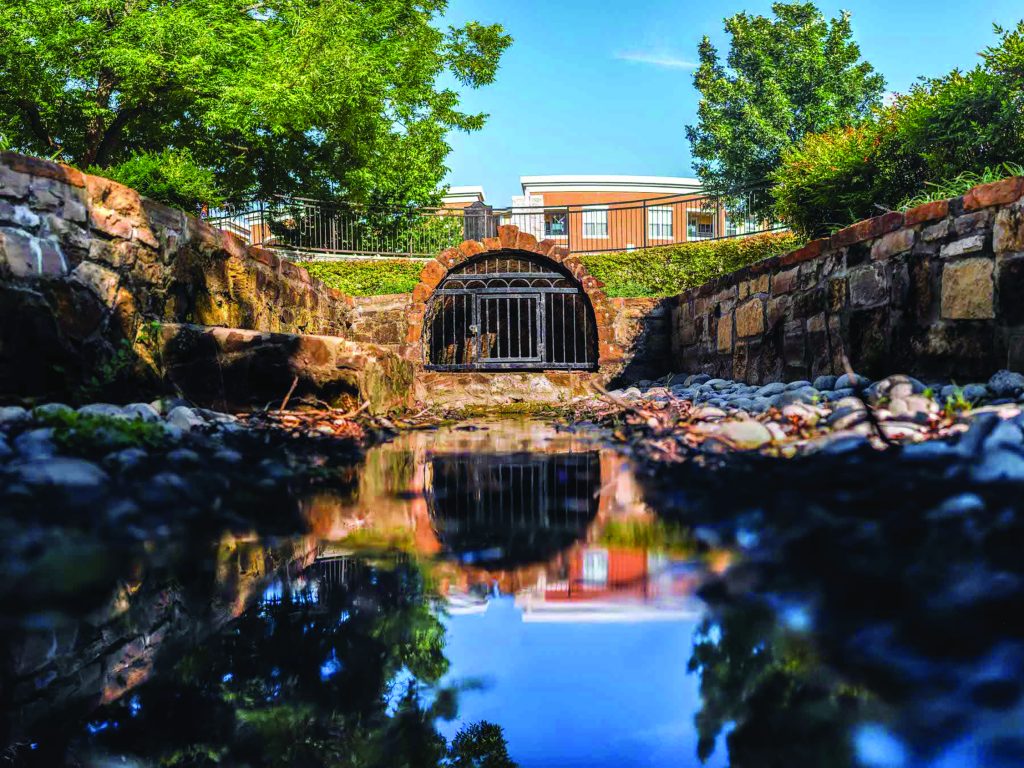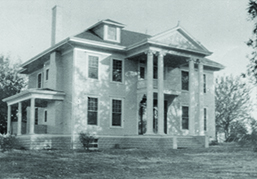As Richardson celebrates its 150th anniversary in 2023, it is important to look back at where the city came from. From its founding in 1873 as a small railroad town to its current-day status as a city that is home to businesses and institutions that help develop the technology that changes the world, a lot has happened over the past 150 years. In the months leading up to the 150th Anniversary Celebration on June 24, Richardson Today will be telling some of these stories and exploring the people and events that helped shape Richardson into the place it is today, including a look this month about Richardson’s growth in the mid-20th century and its role in the space race.
One way to ensure the past is not forgotten is to name things after the people who came before. That is certainly the case in Richardson, where many roads and parks are named after Richardson’s earliest settlers, some of whom still have descendants who live in Richardson to this day. Much of the history of these earliest families can be found in the first volume of Steven R. Butler’s series “A Sesquicentennial History of Richardson, Texas,” which is available at the Richardson Public Library.
ROADS
Bowser Road – David Bowser and his family came to Texas from Illinois in the mid-1850s and settled on land that now makes up the Mark Twain neighborhood. Butler writes that by 1880, David Bowser owned 360 acres of land where he grew crops and raised animals. He died in 1882 and is buried, along with his wife Mary who passed away in 1899, in Floyd Pioneer Cemetery, which is located on an acre of land that is now surrounded by Restland Memorial Park.

Campbell Road – Campbell Road is named for Robert Fleming Campbell, a Tennessee native who relocated to present-day Richardson in 1851. A farmer, Butler writes that Campbell raised wheat, corn and oats and had a variety of livestock. Campbell died in 1881 and is buried in Routh Cemetery, which is located on land donated by Campbell’s son-in-law, Rev. Jacob Routh.
Coit Road – John Taylor Coit came to Texas in 1858. John’s son, Henry, took over the family farm after his father died in 1872. Butler writes that Henry was “active in behalf of Texas Agricultural and Mechanical College [now University] and its extension service program.” Today, the Texas A&M AgriLife Research and Extension Center at Dallas, located on Coit Road just north of Richardson, sits on 206 acres of land that was once the Coit family farm.
Floyd Road – John B. Floyd was born in Kentucky but moved to Texas in late 1855 or early 1856. The Floyds owned 900 acres of land that covers the present-day campus for Texas Instruments and Restland Memorial Park, Butler writes. Floyd continued to amass land, including the property that was the site of Breckinridge, a small settlement that preceded Richardson by about 15 years. Among the buildings in Breckinridge was a two-story wooden house, known as the Floyd Inn. John Floyd, and many of his relatives, are buried in Floyd Pioneer Cemetery.
Greer Street – Henry W. Greer came to Richardson by covered wagon as a boy of 12 around 1870. Henry was a farmer and at one time was part-owner of a cotton gin in Richardson. His wife, Ida Lee Huffhines Greer, was born in Richardson and was the daughter of John Huffhines, Jr. and Surilda Tarrant Huffhines. Their oldest daughter, Ruth Greer, inherited land from Jack Wheeler. This land, the former Wheeler Farm, was sold to developers in the 1950s and became Richardson Heights shopping center and neighborhood.
PARKS
Huffhines Park – The Huffhines family is another of Richardson’s earliest families, serving as the namesake for a park, recreation center and street. Butler notes that John Huffhines, Jr. came to Texas at age 19 with his father and mother, John Huffhines, Sr. and Betsy. One of 14 children, John Jr. and his wife, Surilda, lived with their children in a two-story house that stood for decades on the southeast edge of Richardson where the Math, Science and Technology Magnet Elementary School stands today, about a half block from Huffhines Street.

McKamy Spring Park – The 1.94-acre McKamy Spring Park is in southern Richardson adjacent to the Brick Row Development. The park, as well as the spring that give the park its name, are named for Tom McKamy, Richardson’s first mayor, who took office in 1925. A Texas Historical Marker on the site states the spring was used by Native American tribes, including the “Yoiuane (later absorbed by the Tonkawa), Comanche, Kiowa, Kickapoo, Seminoles and Cherokee.” The marker’s inscription notes that prior to being renamed McKamy Spring, the spring was known as Bowser Spring.
Ruth Back Toler Park – The Back homestead was established in 1893 on land that today lies in the Richardson panhandle. In 1990, the City purchased the property with the agreement that a portion of the land would be made a park and named after the matriarch of the family, Ruth Back Toler. Dedicated in 2011, the 22-acre park is located just north of Breckinridge Park along Renner Road. The park remains largely undeveloped, instead being allowed to revert to its natural state as a bottomland hardwood forest that is home to native plants and animals.
Ruth Young Park – In the mid-1960s, Ruth Young Gamble led the Chamber of Commerce’s City Beautification Committee, which according to a Richardson Daily News article from April 28, 1968, counted among its achievements establishing the City’s Arbor Day celebration. The park located at the northwest corner of Belt Line Road and US 75 is named in her honor. Her Richardson News obituary dated Jan. 15, 1995, said that Young was the first female pilot to fly solo from Love Field, worked at the Dallas Aviation School where pilots trained during World War II, was chairman of the Richardson Realtors Association and made news in the 1940s as Dallas County’s only chinchilla rancher.
CEMETERIES
Blewett Cemetery – This small cemetery, located caddy-corner from the Richardson Gymnastics Center, was founded by the Blewett family, who came to the Richardson area in 1853. Butler writes that the cemetery was established in 1887 by James R. Blewett, son of Rev. George L. Blewett. At the time, James had the graves of his father, brother and six others exhumed and re-buried in the Blewett Cemetery. As a result, the oldest grave in the cemetery is James’ sister, Ann, who died in 1855. A Texas State Historical Marker on the site notes that “the Blewett Cemetery was for many years associated with the Cumberland Presbyterian Church, and until the mid-1920s was one of the primary burial grounds for the Richardson community.”

Routh Cemetery – Located inside the Spring Creek Nature Area just off Routh Creek Parkway, the Routh Cemetery was established on land donated by Rev. Jacob Routh, who was married to Lodemia Ann Campbell, daughter of Robert Campbell. The cemetery’s historical marker states “Routh family members helped to organize a school, church, and store in addition to the family cemetery. … Of the approximately two hundred graves here, fewer than one hundred are marked. The last burial to occur here was that of Serefta Ellen Campbell Miller, who was born in 1836 and died in 1922.”
That was a quick look at some of Richardson’s most prominent residents. Next month, we will take a look at the history of the Library, from the earliest days in Miss Jessie Durham’s Cash Dry Goods Store to its current location on Civic Center Drive.
